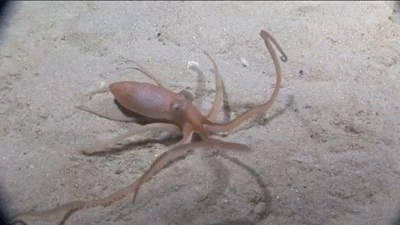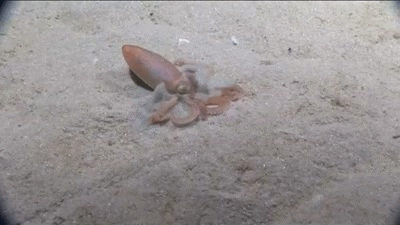todropscience:Southern Sand octopus(Octopus Kaurna) lacks chromatophores for camouflage. Cephalopods
todropscience:Southern Sand octopus(Octopus Kaurna) lacks chromatophores for camouflage. Cephalopods are often celebrated as masters of camouflage in the ocean, but this octopus has an unknown trick, it is able to bury itself.Other octopuses bury themselves under a thin layer of sand or rocks by digging into it with sweeping arm movements. But they remain close to the sediment surface because need direct access to water to breath, with their funnel sticking directly out. The Southern Sand octopus beats them all. Is the first known cephalopod that excavates, and has been filmed on camera for the first time.First, the sand octopus injects water into the sand using its siphon and mantle, liquefying the sand grains to form quicksand. Then moves its arms into, maintaining its jetting of water. Next the octopus extends two arms to the surface, creating a vetilation shaft, and uses mucus to keep the shape of the burrow. At the final, it retracts its arms and exhales strongly to push out any loose sand, before settling into its new shelter.While the selective pressures thatdrove evolution of this behaviour are unknown, its identification enriches our understanding of thepossible life-history traits and functional role of mucus in other benthic octopus species living insoft-sediment environments. Reference: Montana et al. 2015. Liquid sand burrowing and mucus utilisation as novel adaptations to a structurally-simple environment in Octopus kaurna Stranks, 1990 Behavior -- source link

